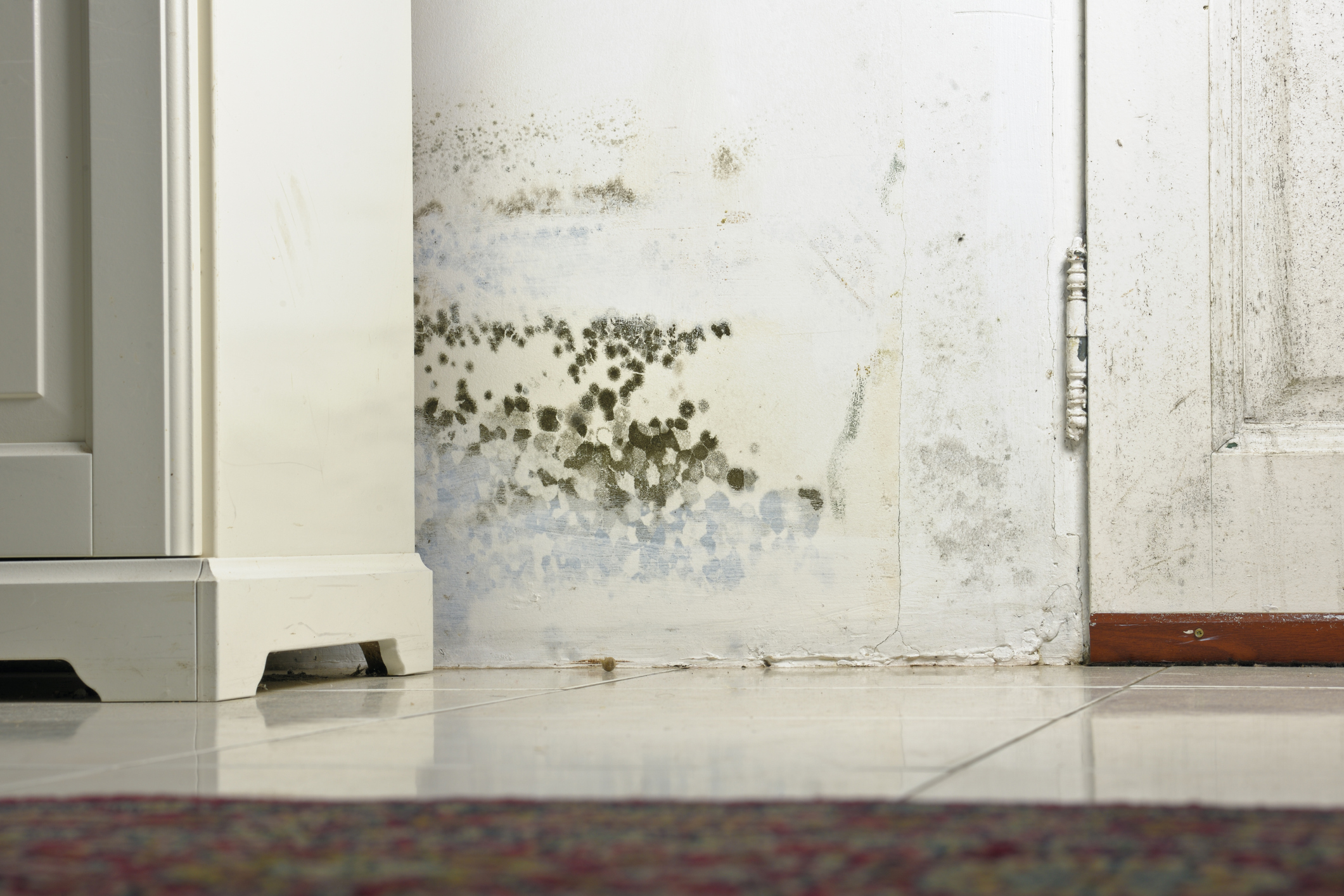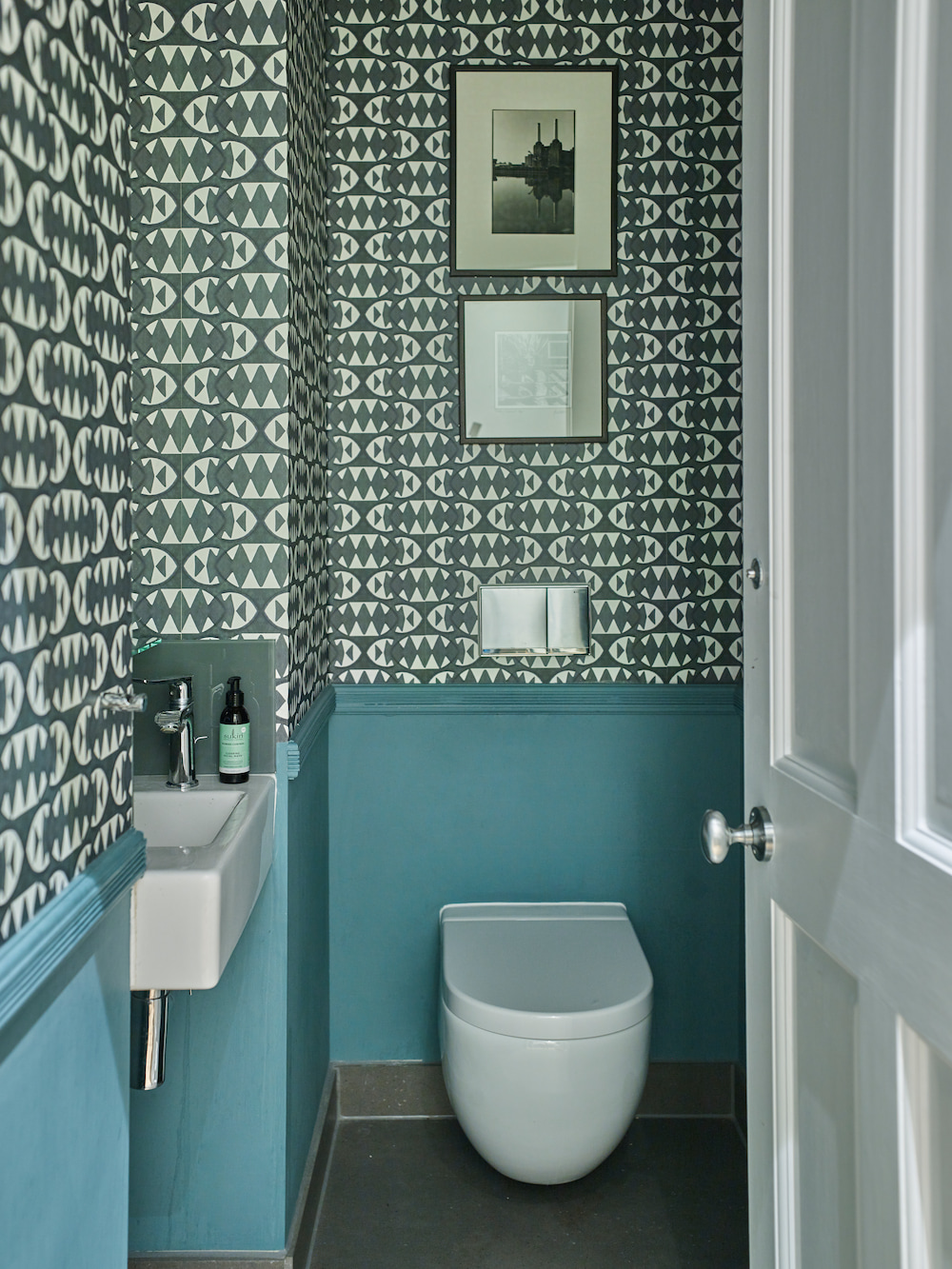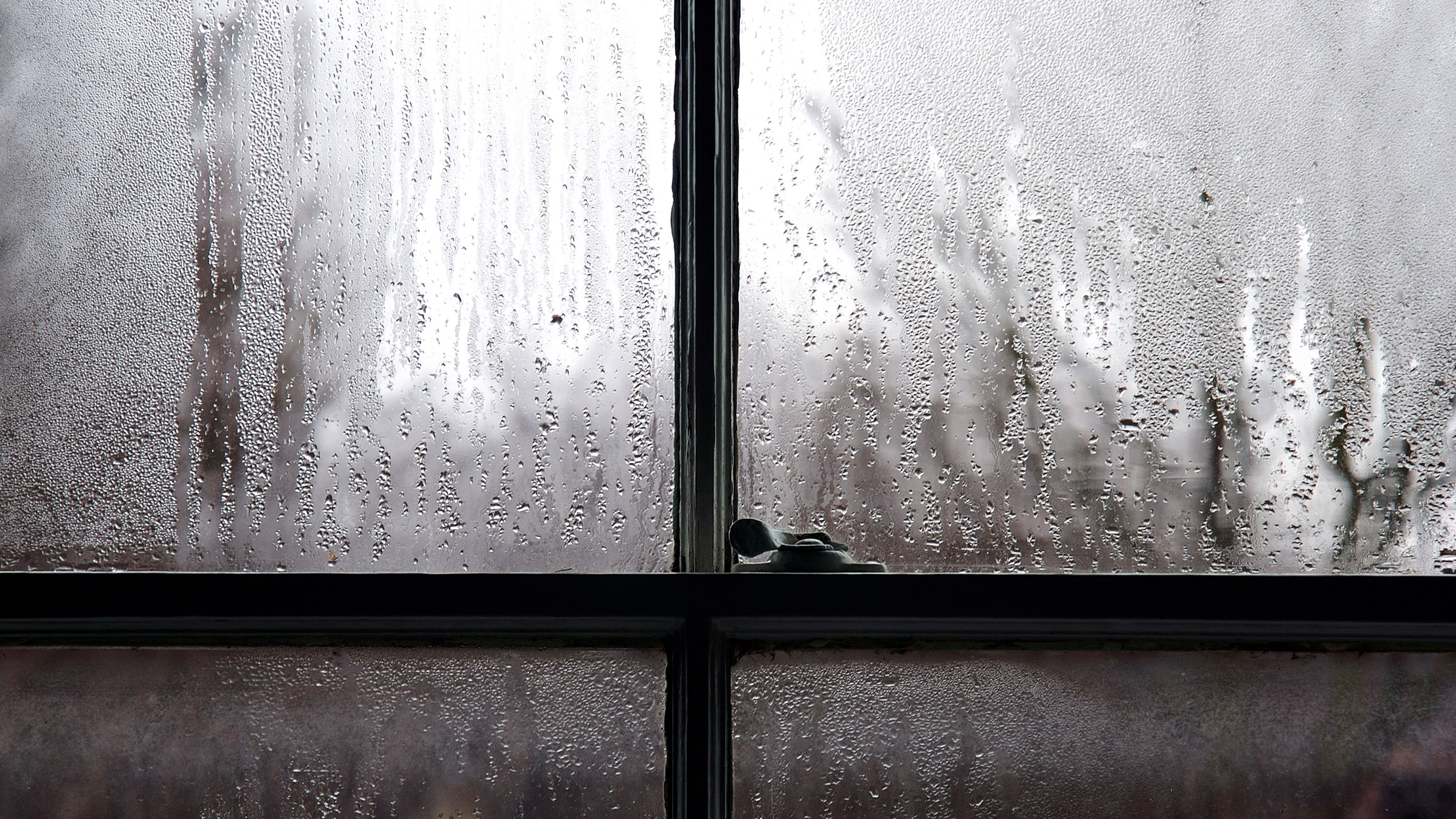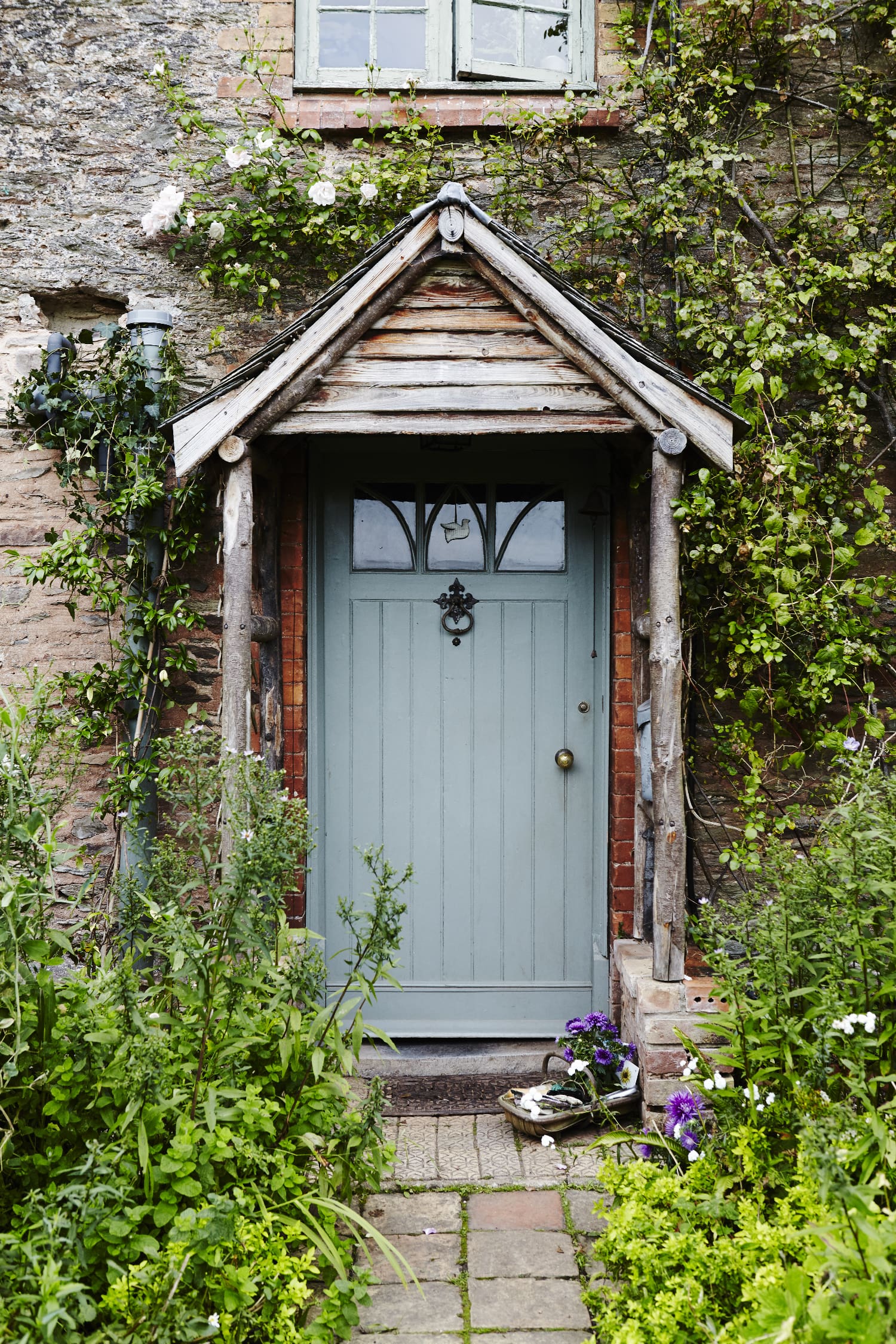What causes damp in a house - spotting the telltale signs
Damp is simply an excess of moisture that can’t escape. As expert David Kinsey explains, dealing with it requires a methodical approach to solving both the obvious and hidden causes

Damp is an unwelcome guest in many homes, but understanding its origins and how to combat it is crucial for maintaining a healthy and comfortable living environment.
In this article, surveyor and expert damp consultant, David Kinsey, delves into what causes damp in a house and explores some ways to stop it from causing damage to your home.
Keep reading to discover how to spot the first signs of this moisture menace and how to treat damp in your home.
What causes damp in a house?
Dampness is essentially an excessive accumulation of moisture that struggles to find an escape route. Whether your home is old or new, moisture is a part of its makeup, present in building materials and the indoor air.
Moisture's natural inclination is to migrate from wet to dry areas, often aided by gravity. Effective house construction should allow for this movement. In essence, dampness arises from one of two fundamental factors:
- A sudden influx of moisture: Dampness can result from a rapid surge in moisture entering the building, typically appearing abruptly and intensely.
- A gradual build-up of trapped moisture: Alternatively, dampness may stem from a local accumulation of moisture due to its inability to escape, often characterised by names like 'penetrating damp' or 'rising damp.' These labels can be misleading as they all point to the same root issue — an excess of trapped moisture.
Damp in old homes
Unlike modern buildings, the construction of an older house is designed to prevent damp problems by preventing the excess build-up of moisture.
They were built almost entirely of permeable materials, with virtually no attempt at waterproofing in the modern sense, and so moisture will pass freely through the walls, floors and ceilings. Instead of being sealed into rooms as condensation, moisture inside the house is able to pass from room to room, and also pass through the external walls to the outside air.
Historically, most dampness was caused by the lack of maintenance leading to leaks. Nowadays, the majority of cases of damp in period houses are caused by inappropriate building work that stops moisture escaping.
With older solid walls, it is advisable to undertake render repairs by removing incompatible modern materials such as cement render or mortar pointing that trap damp. Replace with traditional lime-based breathable materials that allow moisture to evaporate. Allow time for walls to dry out and keep the house heated.

How to spot signs of damp
Dampness which is caused by any sudden increase in the amount of moisture entering the building usually appears without warning — and in a matter of hours. It can also disappear just as quickly in the early days.
The dampness associated with this type of problem is usually very well defined, as it is concentrated and intense. The cause of the problem is often fairly obvious too.
Any tiny drips from plumbing can be the cause of a large and intense damp patch — the escape of water may be small, but is often regular and concentrated on the same spot. This focused, repeated wetting quickly introduces more moisture than can escape, and the overload then spills into neighbouring areas. Hairline cracks in the grouting to bathroom wall tiles, when combined with ‘power showers’ can also be a recipe for damp in homes.
Here are some obvious signs of damp to look out for:
- Water stains: One of the most obvious signs of damp is the presence of water stains on walls, ceilings, or floors. These stains appear as discoloured patches, often with irregular shapes, and can range from light brown to dark yellow or even green, depending on the severity and type of dampness. Water stains are typically concentrated in specific areas and may spread over time.
- Peeling paint or wallpaper: Dampness can cause paint and wallpaper to peel or bubble. When moisture infiltrates the substrate beneath the paint or wallpaper, it can compromise the adhesion, leading to these visible defects. Peeling paint or wallpaper is often accompanied by a damp or musty odour.
- Musty odours: An unmistakable musty odour is a common indicator of dampness. It's the result of mould and mildew growth, which thrive in damp environments. This odour can permeate the affected area and, in more severe cases, may spread throughout the home. If you notice a persistent musty smell, it's essential to investigate the source promptly.
- Mould and mildew growth: Mould and mildew are frequent companions of dampness. They typically appear as dark, fuzzy, or powdery growth on walls, ceilings, or other surfaces. Mould can come in various colours, including black, green, or grey. Keep an eye out for mould or mildew in areas prone to moisture, such as bathrooms, kitchens, and basements.

- Damp or moist walls: Damp walls themselves are an unmistakable sign of dampness. When you touch the affected area, it may feel damp or moist to the touch, indicating that excess moisture has infiltrated the surface. This moisture often leads to the aforementioned issues like water stains, peeling paint, and mould growth.
- Visible condensation: In some cases, you may observe visible condensation on windows or other surfaces. Condensation occurs when warm, humid indoor air comes into contact with cold surfaces, like windows or mirrors, causing water droplets to form. While not always a sign of structural dampness, it suggests high humidity levels that can contribute to damp problems.
- Deterioration of materials: The long-term effects of dampness can lead to the deterioration of building materials. Wood may rot or decay, plaster or drywall can crumble, and metal components may corrode. Inspect structural elements and materials for signs of decay or weakening due to prolonged exposure to moisture. Identifying these signs is the first step toward addressing the issue effectively. Once you recognise these indicators, it's essential to investigate further to determine the root cause of the dampness and implement appropriate measures to rectify it. Early intervention can help prevent further damage and maintain a healthy living environment.
Less obvious causes of damp
Sometimes, the sources of dampness are less apparent, with multiple defects contributing to the issue. While modern construction work is often responsible for these problems, there can be a considerable time delay before dampness becomes noticeable. These less obvious signs require a closer inspection and a discerning eye to detect:
- Unexplained allergies or health issues: Sometimes, the effects of dampness are felt through health issues rather than visual cues. If household members experience unexplained allergies, respiratory problems, or worsening asthma symptoms, dampness could be a contributing factor. Mould spores and allergens can be released into the air, affecting indoor air quality.
- A sudden increase in utility bills: An unexpected and sudden increase in utility bills can be a less obvious sign of dampness. When dampness compromises insulation or heating systems, your home may require more energy to maintain a comfortable temperature. Monitor your energy consumption and investigate unexplained spikes.
- Exterior ground-level observations: Observing the exterior ground level around your home can reveal less obvious signs of dampness. If you notice that soil or paving materials are banked up against exterior walls, it can trap moisture and contribute to damp problems. Ensure that the ground level is appropriately graded to prevent water from pooling near your foundation.
- Electrical problems: Less obvious signs of dampness can also manifest in electrical problems. If you experience frequent tripped circuits, sparking outlets, or malfunctioning appliances in specific areas of your home, moisture may be infiltrating electrical components. Ensure that any electrical issues are promptly addressed by a qualified electrician. Detecting these less obvious signs of dampness may require a more comprehensive investigation of your home. It's essential to remain vigilant and address any unusual or unexplained issues promptly to prevent the escalation of damp-related problems and maintain a healthy indoor environment.

Finding the root cause of damp in a house
Detecting the source of dampness can be a daunting task, but a systematic approach can help pinpoint the issue and prevent further damage to your home. Here's a more detailed breakdown of how to identify where damp is originating:
Visual inspection: Begin with a visual inspection of the affected area. Look for visible signs of dampness, such as water stains, discoloured patches on walls or ceilings, or peeling paint or wallpaper. These visual cues can provide valuable hints about the source.
Check plumbing and pipes: Start by examining your plumbing and pipes. Leaky pipes or fittings, both concealed and visible, can be a primary source of dampness. Look for water stains, corrosion, or dampness around pipes, faucets, and fixtures. Run your hand along pipes to feel for any moisture or drips.
Inspect gutters and your roof: Next, focus on your gutters and roof. Leaking gutters, damaged downspouts, or missing roof tiles or shingles can allow water to penetrate your home. Check for signs of splattering or water tracks on walls below the gutters, as well as water entering the roof space. Inspect your roof for visible issues like missing or damaged roofing materials.
Examine windows and doors: Windows and doors can also be entry points for dampness. Check for blocked grooves beneath window sills, as clogs can redirect rainwater into the wall immediately below. Inspect seals and frames for damage, and ensure that thresholds are not below the adjacent ground level.
Evaluate exterior and interior coatings: Assess the condition of exterior and interior coatings on walls. Impermeable coatings can trap moisture, leading to dampness. Cracks in exterior coatings can allow water infiltration. In the case of interior coatings, ensure they are not preventing moisture from escaping, especially if they are applied over damp areas.
Investigate exterior ground levels: Ground levels against the exterior walls are crucial. Ensure that the earth is not banked up too high against outside walls, as this can trap moisture and exacerbate dampness issues. Patios or walkways that are laid too high can also contribute to dampness by splashing rainwater onto walls.
Consider ventilation and humidity: Evaluate the ventilation in your home, particularly in areas prone to dampness, like bathrooms and kitchens. Poor ventilation can lead to condensation and mould growth. Consider installing extractor fans and trickle vents in these areas to improve airflow. Also, keep humidity levels in check, as high indoor humidity can contribute to damp problems.
Check climbing vegetation: If your home has climbing vegetation like ivy or vines, inspect these areas carefully. Climbing plants can trap moisture against walls, inhibiting them from drying out naturally. It's advisable to clear any vegetation that might be contributing to damp issues.
Moisture-meter and professional help: In some cases, utilising a moisture-meter can help identify areas with elevated moisture levels. If the source of damp remains elusive, or if you suspect structural issues, it's best to seek professional assistance from a building surveyor or a qualified damp specialist. They have the tools and expertise to conduct thorough investigations.
Remember that early detection and addressing the source of dampness promptly can prevent further damage to your home and protect your health by ensuring a dry and comfortable living environment.
If you're tackling a damp problem in your home, our guide to spotting and treating wet rot, as well as our articles about how to solve condensation in your home and how to get rid of mould on skirting boards have plenty of practical tips on how to solve these issues.
Get the Homebuilding & Renovating Newsletter
Bring your dream home to life with expert advice, how to guides and design inspiration. Sign up for our newsletter and get two free tickets to a Homebuilding & Renovating Show near you.
David M Kinsey is a Chartered Engineer and Surveyor who now specialises in damp and the problems of older houses. Over the years, David had called a variety of period houses home, so he has first hand experience of the trials and tribulations of maintaining and renovating old houses. He regularly advises on damp and its associated issues, offering advice for homeowners of tiny cottages up to large country houses and everything in between. He is regularly consulted about listed buildings, and is often recommended by conservation officers. However, he has also been known to dip his toes into condensation issues in modern homes.
- Gabriella DysonInteriors journalist and contributing editor

